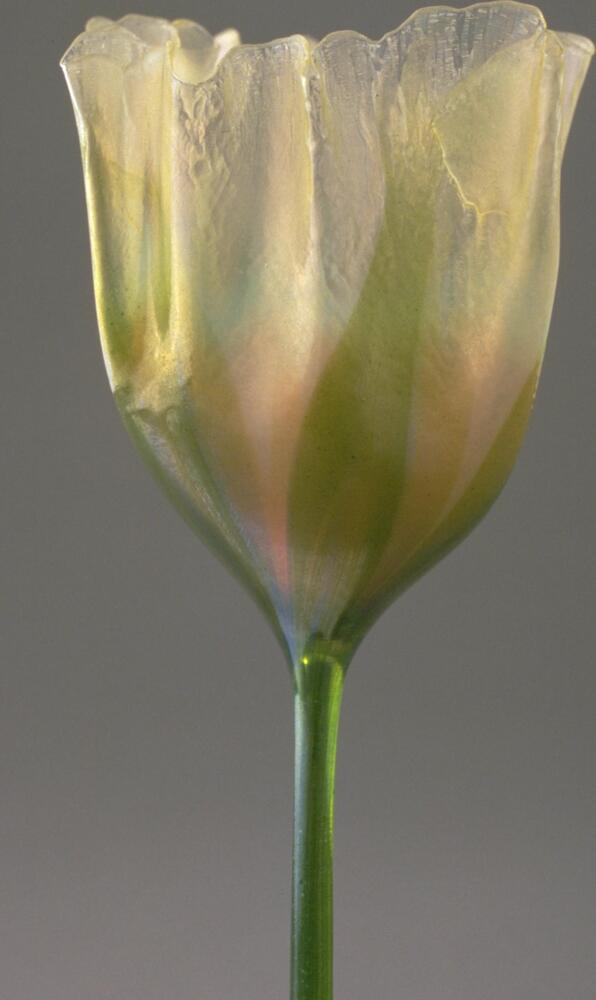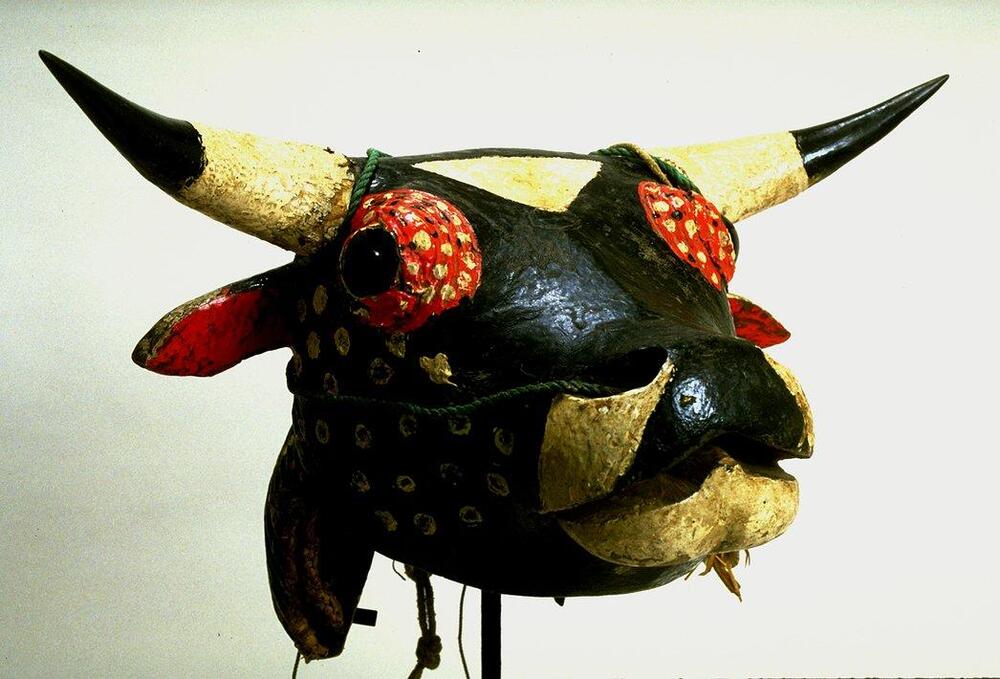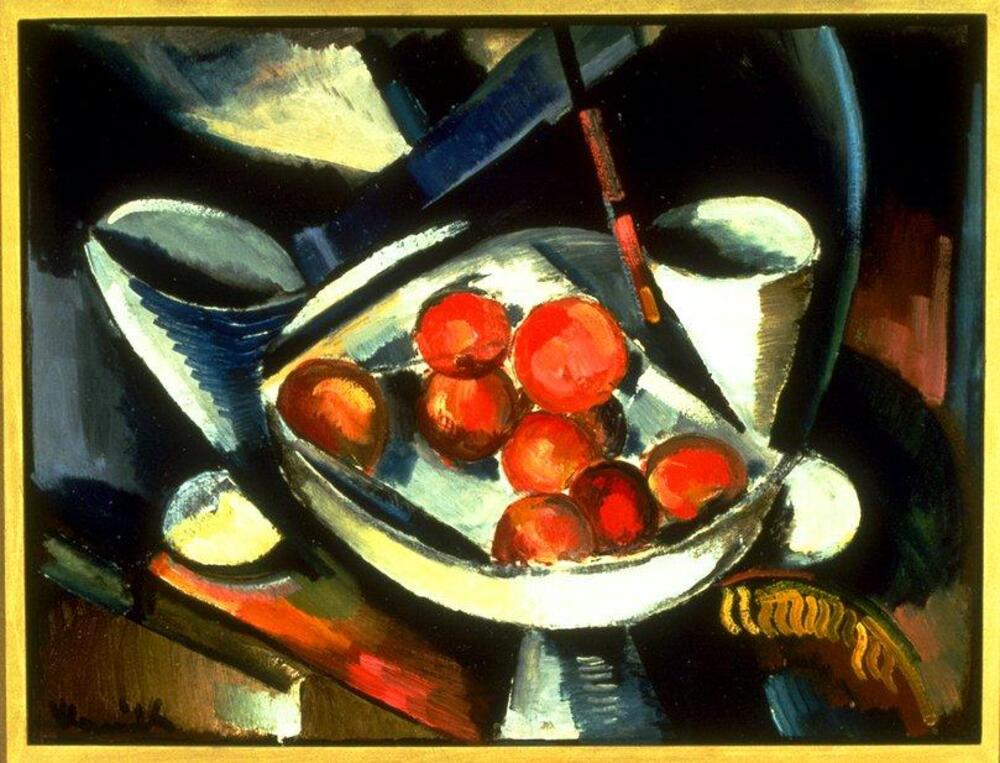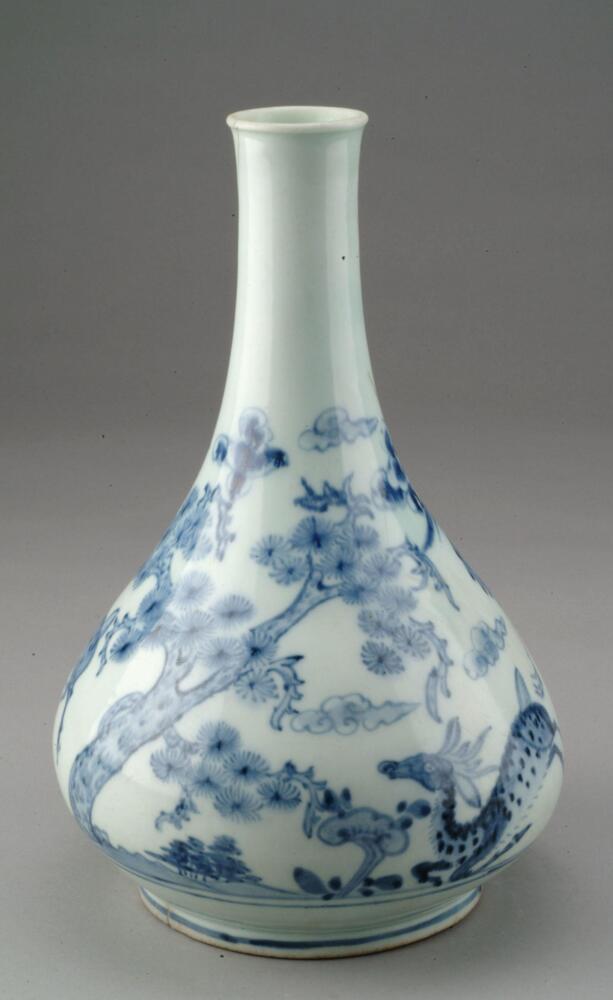Third Grade: Nature
Docent Curricular Tour
Discussion: Many artists engage with nature, as inspiration or as subject matter. How do you like to experience nature? Hiking in the woods? Going to the beach? Gardening?
Stop 1: Arthur Dow, Spring Landscape
Engagement: We are looking at this painting as if we could walk into it. Have you ever thought of doing that?
Ask: What are we looking at, what do you see? We are going to travel around in this painting and find out what there is to see.
Divide group into pairs: You two, go down this path and tell us what you see there, you two just wander around on the grass, last two go over the hill. Ask what they see, smell, hear (use all five senses). Have the children report out.
How did the artist help you imagine what you imagined? What did the artist paint to provoke your senses?
This is appropriate for 8-year olds because:
-socialize in pairs
-use creative imagination
-look at nature
-engaged in an activity
-activity is like a game
Engagement: Does this painting remind you of a place you have been? Keep that in mind. Don’t forget the place you have seen that this reminds you of. What parts of this picture in your memory were important to you?Now, let’s look carefully at this painting. What season is it? What kind of day? Imagine you are walking down the path to the house and note what you see, hear, etc.One thing the artist thought was important was light and dark: what do you think.
Stop 2: Monet, Breakup of the Ice
Transition: compare colors / mood with the Dow.
Imagine yourself far away, distant land in a very cold winter. Tell us what you see, what you would be wearing, what you would be smelling. (discuss: winter, what colors, what mood colors create in the painting, what the objects in the river are and what sounds they might make. Tie in with story of Monet and wife Camille… tie in to mood of the painting (compare to Camille on death bed—colors the same)). Monet used only four colors.
-stories of long ago/far away
-imagination—inside the picture
Stop 3: Tiffany, Tulip-shaped Vase
Start by looking: what inspired the artist (stop to define inspiration). Discuss what it is made of—idea of material. Introduce idea of art with glass. Another fun word: febrile. Connect with other pieces by Tiffany: perhaps wisteria and peacock and discuss how Tiffany was inspired by nature. Could address ideas of geometry of form in the mosaic.
-expanding vocabulary, translucent, opaque, transparent,
-geometry
-ideas in nature
Stop 4: Mask (vaca bruto) Bijogo Peoples
Ask: What is this? How do you know? What features remind you of a cow/ox?
[Show them a picture of a real ox. Ask: What are oxen like? –strong, big, useful, impulsive, hard to control]
How is the mask different than the real ox?
[talk about the ritual/coming of age] why would they use an ox mask for this ceremony?
Why does it look different? In social ritual we use real things from nature but translate them into symbols.
Stop 5: Vlaminck, Still Life with Apples
Engagement: the taste of apples
Say: Everyone close your eyes and imagine you are at home and there is an apple on a dish on a table in front of you. In your imagination, reah out and take the apple. Now imagine that you are taking a bite out of it. Imagine how it tastes. Can someone describe how it tastes? Can someone describe the sound of biting into the apple or the texture of the fruit? Is this a juicy apple? How does the juice taste?
Now open your eyes and let’s look at this painting. How is this painting different than the apple on the dish in your house? Is the apple the same color? Do you think this apple would taste good?
Now look at the bowl and the table. How are they different than your dish and table? [ask about easy things like color and shape then move to the composition. Se if they can describe the different perspective of cubism]
Why would an artist paint a still life like this?
Stop 6: Wine Bottle with Ten Symbols of Longevity, Korea
Introduce object: We are going to look at this Korean wine bottle. But first a question.we ask if they can name some of their favorite celebrations - birthday should be among them. Discuss the practice of making good wishes for someone on their birthday, or at the New Year, etc. What might you say? What good wishes would you have for another?
Let students walk around all sides.
Tell them that this was made with symbols painted on it.
Introduce word longevity (use card, note word long in it). Nature symbols
representing good wishes for a long life.
Break group into pairs, give them cards with pictures of each symbol and
its meaning - find and discuss symbols.
Talk a little about medium (clay: natural material), process, color, etc.
Discuss - how would this object - with longevity symbols - have been used?
Transition - Since this is the last stop - as we say goodbye - practice good
wishes for each other, wish for "longevity" and many more
returns to the museum.
Part of 1 Learning Collection
<p>Docent Curricular Tour</p>
Rate this Resource
AVG: 0 | Ratings: 0
& Author Notes
Creative Commons by-nc-saLast Updated
April 27, 2017 11:35 a.m.Report
Reporting Policy






